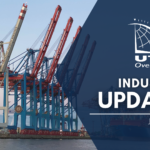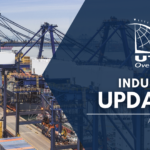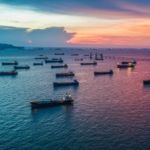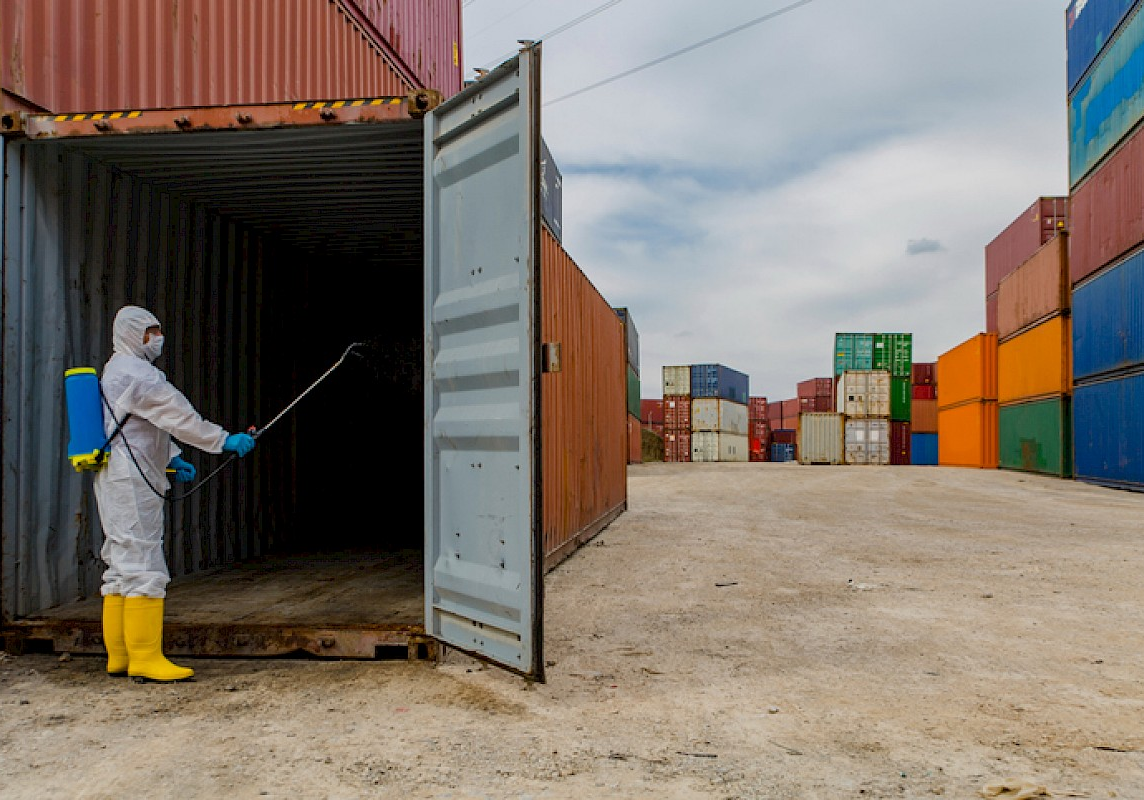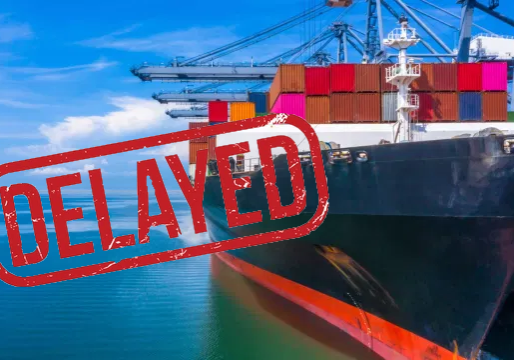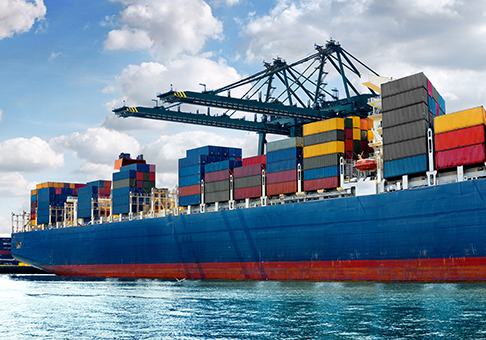Industry Update June 2022
Labor negotiations, looming energy crunches, and more lockdowns? Current events are changing the landscape for tomorrow's supply chain.
Here's 5 things you need to know today.
-
- USWC labor negotiations
- Freeport LNG explosion will have major ripple effect on global energy supply
- China’s COVID-Zero policy & ongoing lockdowns
- Uyghur Forced Labor Prevention Act: US CBP will start enforcing June 21
- German labor negotiations
Contracts for over 22,000 port workers employed at 29 US West Coast ports will expire on July 1. Originally negotiated over nine tense months in 2014-2015, the negotiations resulted in work slowdowns and lockouts that sent a ripple effect through the supply chain. In late Nov 2021, the ILWU rejected an extension.
-
- The ILWU and PMA have been negotiating since early May, with a brief 10-day break Both organizations have agreed to a media blackout. (The Loadstar)
- In a joint statement on June 14, ILWU and PMA stated that they are both committed to reaching an agreement and keeping cargo moving without disruption during the negotiation process, as they expect talks to extend beyond the July 1 expiration date. (JOC)
- Experts say that automation is the hot-button issue during these negotiations. The ILWU is opposed to automation, stating it will take jobs away. PMA advocates for automation to improve efficiency: in 2021, the ports of Long Beach and Los Angeles were ranked 369 and 370 out of 370. (World Bank Container Port Performance Index 2021)
- Just before negotiations, PMA released a report on the benefits of automation, finding that automated terminals processed containers twice as quickly as conventional ones, while paid worker hours rose by almost one-third. (Supply Chain Brain)
- Existing supply chain issues, like disruptions in rail service and shifting vessel schedules, along with the possibility of upcoming congestion, shortages, and slowdowns has led to more ships avoiding the USWC in favor of East and Gulf Coast ports. USWC ports handle over 40% of containerized trade with East Asia. (Supply Chain Brain)
As Summer Comes into Full Swing, Energy Crises Loom
-
- After an explosion in an over-pressurized pipeline on June 8, Freeport LNG reported on June 14 that the facility is entirely offline, hoping to resume partial operations in 90 days. The plant expects to have completed all repairs and be fully operational by the end of 2022. Freeport LNG represents almost 20% of the US’ LNG processing capacity. (CNBC)
- The plant had been operating close to full capacity, forgoing regularly scheduled maintenance to maximize output. The explosion impacted the pipe racks that transfer LNG to storage and dock facilities. No liquefaction trains, storage tanks, dock facilities, or LNG process areas were damaged. (NYT)
- This will result in widespread energy crunches in Europe, where buyers have been seeking alternatives to Russian gas. In recent months, ~70% of Freeport’s exports have gone to the European Union and Britain. (Reuters)
- The June 14 announcement that Freeport LNG would be offline until September was compounded by news of reduced LNG shipments to Germany via Russia’s Nord Stream pipeline due to planned maintenance. Europe previously relied on Russia for 40% of its gas supplies. (NYT)
China’s COVID-Zero policy continues to cause disruptions
Less than two weeks after lifting lockdowns, Beijing and Shanghai are imposing new restrictions and mass-testing measures, raising concerns that stricter lockdowns may once again be on the way.
-
- Shanghai briefly placed the majority of the city on lockdown to conduct mass testing, causing residents to rush to stock up on basic supplies. (Bloomberg)
- A survey of 130 US businesses with operations in Shanghai has revealed that many have resumed operations, but activity levels are far below normal (Bloomberg)
- Truck flows in Shanghai had recovered by almost 80% since lockdowns were eased on June 1. However, many truckers are still cautious about traveling to certain regions, facing rigid requirements to produce a negative COVID test and traffic permit, (FreightWaves)
- Experts anticipate USWC port congestion ahead and are already seeing measures taken to shift deliveries to East and Gulf Coast ports to avoid potential delays. Once Shanghai fully reopens, drayage rates in China will increase, resulting in a wave of cargo that could overwhelm the Post of Los Angeles and Long Beach. As logistics managers are moving more containers to the East and Gulf Coast, ports are adjusting for the anticipated increase with additional gate hours and pop-up container storage lots. (FreightWaves)
Uyghur Forced Labor Prevention Act: Imports from Xinjiang not welcome after June 21
Starting June 21, US Customs and Border Protection (CBP) will begin enforcing the UFLPA, banning all imports from Xinjiang Province, China from entering the US.
-
- The UFLPA establishes a “rebuttable presumption” that all products imported from the region were produced using forced labor. (Material Handling & Logistics)
- On June 13, CBP released Operational Guidance for Importers to prepare for UFLPA enforcement. The guidance specifies that all enforcement actions will be taken on a case-by-case basis; CBP will review each shipment to determine any ties to the Xinjiang Uyghur region or other use of forced labor. (JD Supra)
- Prior to the June 21 enforcement deadline, CBP issued “known importer letters” to several importers who have previously imported merchandise subject to the impending presumption and ban to encourage them to take steps to address their supply chain before enforcement goes into effect. (Material Handling & Logistics)
- Several Chinese manufacturers have responded to the crackdown by creating supply chains outside of Xinjiang to cater to the US market. However, this has been met with skepticism as it is well-known that Uyghurs are transported to various locations throughout China to work in factories as contracted labor and that other Chinese people outside of Xinjiang are also working under forced labor conditions. (Material Handling & Logistics, S&P Global)
German ports enter into contentious labor negotiations
Port employer Central Association of German Seaport Companies (ZDS) and ver.di, the union representing dock workers, are negotiating to hold off a strike that would disrupt already stressed operations.
-
- Talks broke down over the weekend as the union was not satisfied with the offer ZDS brought to the bargaining table. In light of the rising cost of living in Germany, ver.di felt the offer was inadequate, while ZDS felt it was extensive. A new date for negotiations is expected to be announced in the next few days.
- A warning strike was held for several hours on June 9. Given global supply chain disruptions, ZDS called the short strike “absolutely irresponsible.” Any further action by the union will impede the already strained supply chain in Northern Europe. Delayed ships are expected to arrive at German ports in the coming weeks, which will put further pressure on operations, and other European ports are heavily congested and unable to accept transshipped cargo.
- The negotiations affect 12,000 workers at the ports of Hamburg, Bremerhaven, and Lower Saxony. (GCaptain)


